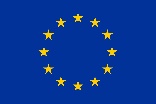ONEforest Final Conference: Celebrating Successes, Networking, and Future Directions
The ONEforest Final Conference was an outstanding success, showcasing the achievements and fostering connections within the forestry community. Spanning two days, the event featured two poster sessions and brought together five EU Forestry Networking initiatives alongside five EU-funded projects. The conference boasted over 25 expert speakers and showcased more than 50 posters, highlighting the latest research and innovations.
Held in a hybrid format, the event welcomed a diverse group of 125 in-person attendees from 12 countries, including Germany, Algeria, Austria, Belgium, Slovenia, Spain, Estonia, France, Italy, Morocco, Sweden, and Switzerland. The conference was a melting pot of knowledge and collaboration, with representation from 16 universities, 15 companies, and 8 model forests.
The true highlight of the INNOVAForONE was the vibrant and engaging atmosphere that left participants highly satisfied with their experience. Attendees had the opportunity to network, share insights, and discuss the future of forestry.
For those who couldn't attend or wish to revisit the event, video replays of the sessions are available. You can also explore the posters and presentations gallery and discover the key takeaways from the roundtable discussions.
Videos - Final Conference
